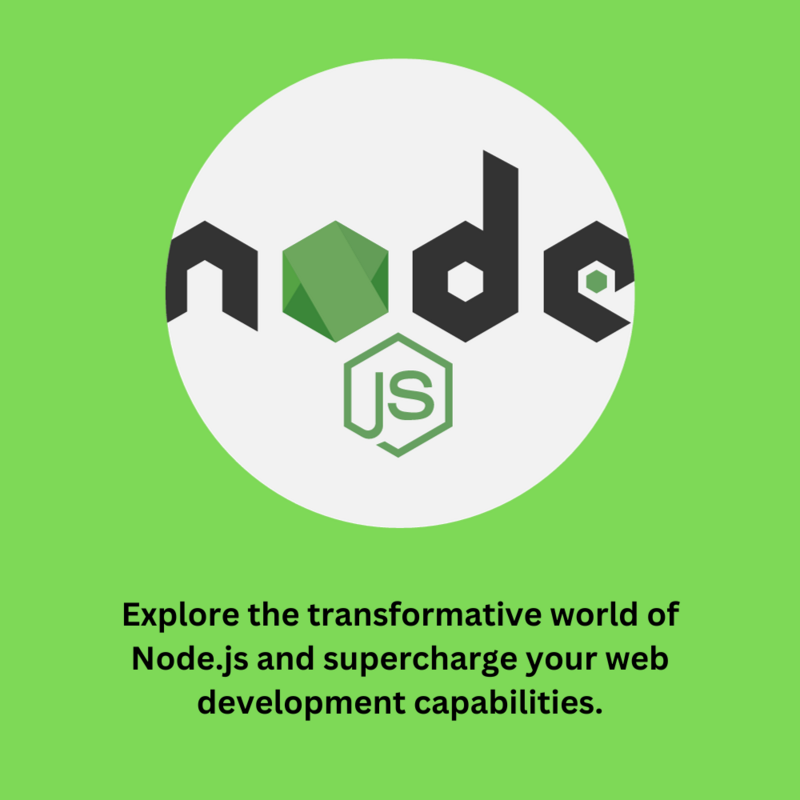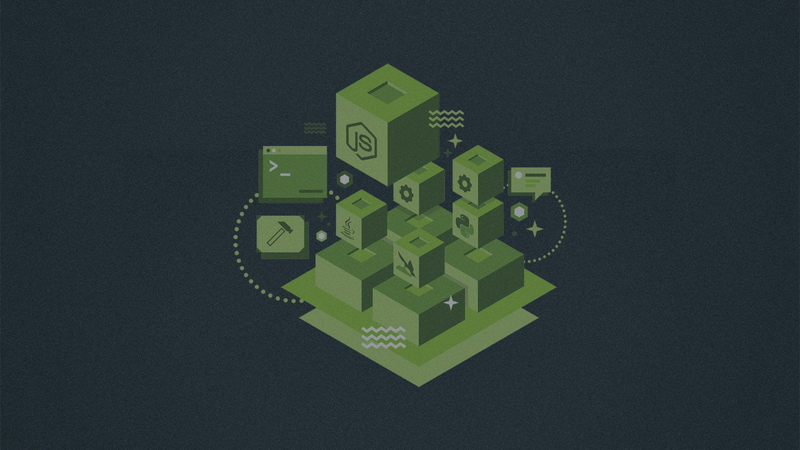Node.js has gained immense popularity in web development and revolutionized how developers build web applications. Whether you're an expert developer or just starting your journey, understanding Node.js and its capabilities can significantly enhance your development skills. This blog post delves into Node.js, exploring its features, advantages, and real-world use cases.
What is Node.js?

Node.js is an open-source JavaScript runtime environment built on Chrome's V8 JavaScript engine. Unlike traditional JavaScript on the client side, Node.js enables developers to run JavaScript on the server side, allowing for efficient and scalable back-end development. It provides a non-blocking, event-driven architecture that makes it highly suitable for building real-time applications, APIs, microservices, and more.
Key Features and Advantages:
Speed and Performance:
Node.js employs an asynchronous, non-blocking I/O model to handle multiple concurrent requests efficiently. This characteristic makes it exceptionally fast and well-suited for building high-performance applications, particularly those involving real-time data streaming or heavy I/O operations.
Scalability
Node.js's event-driven architecture and ability to handle many concurrent connections make it highly scalable. By leveraging a single-threaded, event-loop model, Node.js can efficiently handle thousands of simultaneous connections with minimal resource consumption, making it an excellent choice for building scalable applications.
Full-stack JavaScript
One of the most significant advantages of Node.js is the ability to use JavaScript both on the front and back end. This shared language between the server and the client facilitates seamless communication and code sharing, reducing development time and effort.
Vast Package Ecosystem
Node.js has a rich ecosystem of open-source packages and modules available through its package manager, npm. This extensive collection of libraries enables developers to leverage existing solutions and accelerate development by reusing code for standard functionalities.
Community Support
Node.js has a vibrant and active community of developers, translating into extensive support, regular updates, and a wealth of learning resources. This supportive community fosters collaboration, knowledge sharing, and the continuous improvement of the Node.js ecosystem.
Real-world Use Cases:
Web Applications
Node.js is an excellent choice for building web applications of any scale, thanks to its speed and scalability. Popular frameworks like Express.js and Sails.js provide a solid foundation for developing server-side logic and RESTful APIs.
Real-time Applications
Node.js's event-driven nature makes it perfect for building real-time applications like chat apps, collaboration tools, multiplayer games, and streaming platforms. Technologies like Socket.IO enable real-time communication between the server and the clients.
Micro services
Node.js, with its lightweight and modular architecture, is ideal for building micro services-based architectures. It enables the creation of independent, scalable services that can communicate with each other through APIs, facilitating the development of complex systems.
DevOps Tools:
Node.js is widely used to develop command-line tools and build systems and automation scripts. Its ease of use and powerful libraries like Commander.js and Gulp makes it an excellent choice for DevOps tasks and CI/CD pipelines.

A step-by-step guide to developing a Node Js Web Application:
This step-by-step guide walks you through building your web app using Node JS.
Install Node JS and set up your development environment
Step one in building a web application with Node JS is to install Node JS and set up your development environment. You can download the latest version of Node JS from its official website and follow the installation instructions. Once Node JS is installed, you must choose a text editor or integrated development environment (IDE) to write your code. Some popular options include Visual Studio Code, Sublime Text, and Atom. Set up your preferred text editor or IDE, and you're ready to start building your web app with Node JS.
In addition to installing Node JS and setting up your development environment, you must familiarize yourself with the basics of Node JS. Node JS is a server-side JavaScript runtime that allows you to build scalable, high-performance web applications. It uses an event-driven, non-blocking I/O model ideal for building real-time applications. To get started with Node JS, you'll need to learn the basics of JavaScript, including variables, functions, and control structures. You'll also need to know about Node JS modules, which are reusable pieces of code that can be shared between different parts of your application. With these basics in place, you'll be well on your way to building robust web applications with Node JS.
Choose a framework for your web application
After setting up your development environment, the next step in building a web application with Node JS is to choose a framework. A framework is a collection of tools and libraries that provide a structure for your application and make it easier to build and maintain. Some popular Node JS frameworks include Express, Koa, and Hapi. Each framework has strengths and weaknesses. So, selecting a framework that fits your needs and preferences is crucial. Once you've chosen a framework, you can start building your web app by creating routes, handling requests and responses, and connecting to databases and other services.
Express is the most popular Node JS framework, known for its simplicity and flexibility. It has a large community and a vast ecosystem of plugins and middleware, making it easy to add functionality to your app. On the other hand, Koa is a newer framework that focuses on simplicity and modularity. It uses modern JavaScript features and async/sy await syntax, making it a good choice for building scalable and efficient applications. Hapi is another popular framework emphasizing configuration over code, making creating reusable components and plugins easy. It also has built-in support for authentication, caching, and validation. Ultimately, the choice of framework depends on your project requirements, team expertise, and personal preferences.
Create a basic server using Node JS
To create a basic server using Node JS, you'll need first to install Node JS on your computer. Once you've done that, open up your terminal or command prompt and navigate to the directory where you want to create your project. Then, create a new file called "server.js" and open it in your text editor of choice. In this file, you'll need to require the "http" module, which will allow you to create a server. Then, you can use the "createServer" method to create a new server and specify a callback function to handle incoming requests. Finally, you'll need to listen to a specific port to start accepting submissions. Once you've done all this, you'll have a basic server running using Node JS.
Add routes and handle HTTP requests
Now that you have a basic server, it's time to add some routes and handle HTTP requests. Routes are URLs that your server will respond to. For example, if a user visits "http://localhost:3000/about", your server should respond with the appropriate content for the "about" page. To add routes, you'll need to use the "createServer" method again, but this time you'll specify a callback function that checks the URL of the incoming request and responds accordingly. You can also use the "HTTP" module to handle different types of HTTP requests, such as GET, POST, PUT, and DELETE. By handling these requests, you can design a fully functional web application using Node JS.
To add a route, you'll first need to create a new function to handle the request. This function should take two arguments: the request object and the response object. The request object holds information about the incoming request, such as the URL and any data that was sent with the request. The response object is then sent back to the client, such as HTML, JSON, or a file.
Connect to a database and store data
Once your routes are set up, you can connect your web application to a database to store and retrieve data. Node JS has several popular database options, including MongoDB, MySQL, and PostgreSQL. To connect to a database, you must install the appropriate database driver and configure your server to use it. Once connected, you can use SQL or other query languages to create, read, update, and delete data from your database. This will allow you to create dynamic web applications that store and retrieve user data, such as login credentials, preferences, and other information.
To connect to a database in Node JS, you'll first need to install the appropriate driver. For example, if you're using MongoDB, you can install the MongoDB driver using npm. Once you've installed the driver, you must configure your server to use it. This typically involves creating a connection string with the database name, username, and password. You can then use the driver's API to interact with the database. For example, you can use the insertion () method to add a new document to a MongoDB collection or the SELECT statement to retrieve data from a MySQL table. With Node JS, you can choose the database that best suits your needs and easily store and retrieve data from your web application.
Conclusion:
Node.js has undoubtedly reshaped the web development landscape, enabling developers to build fast, scalable, and efficient applications. Its asynchronous, event-driven architecture, extensive package ecosystem, and full-stack JavaScript capabilities make it a compelling choice for many projects. By harnessing the power of Node.js, developers can deliver high-performance web applications, real-time systems, microservices, and more. So, if you still need to explore Node.js, now is the perfect time to dive into this exciting technology and unlock its immense potential.
Newsletter to recieve
our latest company updates
Comment